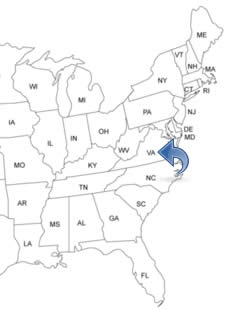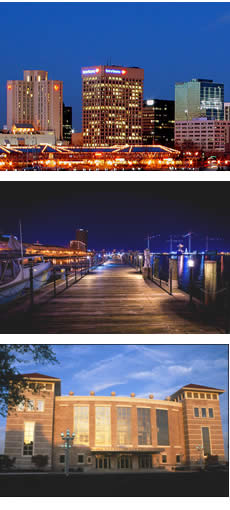VIRGINIA PEOPLE SEARCH!
- ✔ Contact Info
- ✔ Phone Numbers
- ✔ Criminal Records
- ✔ Income Info
- ✔ Neighbors
- ✔ People's Age
- ✔ Property Ownership
- ✔ And Much More
Norfolk, Virginia
Norfolk is located in the southeastern part and is the third largest city in the U.S. State of Virginia. Norfolk is a Navy town and has a long military history and you will find the world's largest naval base here. The city serves as the commercial and cultural center for the region of Hampton Roads. The city has many historic homes, world-class museums, opera, symphony, ballet and a vibrant arts community. Norfolk has four companies on the Fortune 500 list.
To See And To Do In Norfolk
- Norfolk Botanical Garden
- Chrysler Museum of Art
- The Gallery at Military Circle
- Naval Station Tour
- d'Art Center
- Nauticus, National Maritime Center
- MacArthur Center
- Town Point Park
- Spirit of Norfolk cruise
- Shops of Historic Ghent
- Virginia Arts Festival
- Virginia Zoo
- Visit Norfolk's Museums and Historic Sites
History Of Norfolk - Timeline
In 1524, explorers from Spain mapped the coast. In 1584, Sir Walter Raleigh and his men from England explored the area. In 1607, the English seaman Christopher Newport, the adventurer and soldier Captain John Smith, and more than 100 men made their first landfall at Cape Henry. They soon left the area and settled at today's Jamestown.
In 1622, Adam Thoroughgood from England settled in the area. In 1636, a ferry service from Norfolk to Portsmouth was established by Adam Thoroughgood. In 1637, Adam Thoroughgood helped name the county to Norfolk County. In 1640, the Elizabeth River Parish was completed. (Today's Norfolk Naval Station).
In 1649, 5 miles from Norfolk, William Moseley Senior from England and his family built the Rolleston Hall, a manor house in Dutch style. In 1673, the Half Moon Fort was built. (Today's Town Pointe Park). In 1682, Norfolk was founded and some houses in Georgian architectural style was built in today's Ghent neighborhood. (It was named after the city Ghent in Belgium). In 1693, A Courthouse was built. In 1698, the first church in Norfolk was completed.
In 1728, the Norfolk Academy was established. In 1736, Norfolk was incorporated. In 1739, the St. Paul's Episcopal Church was built. In 1776, English ships under the command of Lord Dunmore opened fire and destroyed Norfolk. In 1796, the newspaper, the American Gazette was published in Norfolk.
In 1783, the town began to be rebuilt. In 1788, the first fire-fighting company was established. In 1790, a new Courthouse was built.
In 1800, nearly 7,000 people lived in the town. In 1804, a fire destroys more than 300 houses in Norfolk. In 1809, Joseph Jenkins Roberts was born in Norfolk. He would later move to Africa and became the first and seventh President of Liberia. In 1810, Fort Norfolk was constructed on the Elizabeth River.
In 1811, street lamps were erected in the town. In 1832, a steam ferry operated between Norfolk and Portsmouth. In 1845, Norfolk was incorporated as a city. In 1856, the St. Vincent's Hospital was founded. In 1858, the railroad was completed. In 1862, Mayor Lamb surrendered the City to Union troops. In 1868, the daily newspaper, the Virginian-Pilot, was founded. In 1870, a horse-drawn trolley began to operate in Norfolk. In 1894, an electric trolley began to operate in Norfolk.
In 1900, the New Journal and Guide, a weekly newspaper, was founded. In 1913, the Wells Theatre was built. In 1917, Naval Station Norfolk, the world's largest naval station, was in use. In 1919, the Attucks Theatre was completed. In 1921, the Virginia Beach Boulevard, a road from Virginia Beach to Norfolk, was completed.
In 1924, a bus route was established between Norfolk and Virginia Beach. In 1930, Old Dominion University was established. In 1933, the Chrysler Museum of Art was established. In 1935, the Norfolk State University was established. In 1938, the Norfolk Municipal Airport opened. In 1945, the first black police officers were seen in the streets. In 1962, the Kirn Memorial Library opened. In 1972, Chrysler Hall was built. In 1973, Eastern Virginia Medical School was established. In 1994, Nauticus, the National Maritime Center opened.

